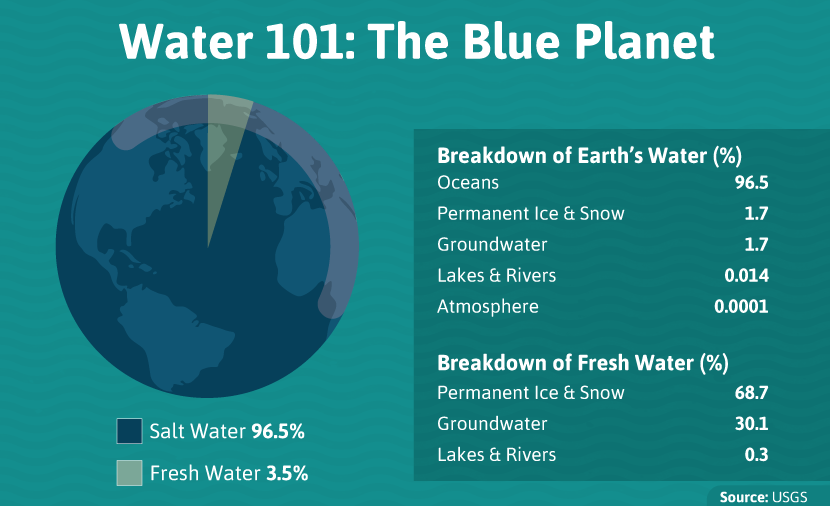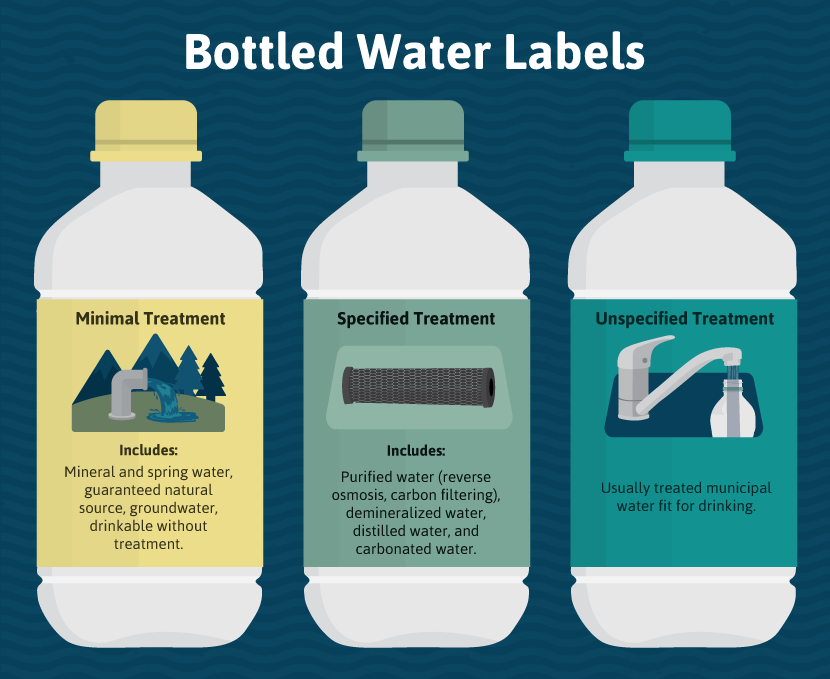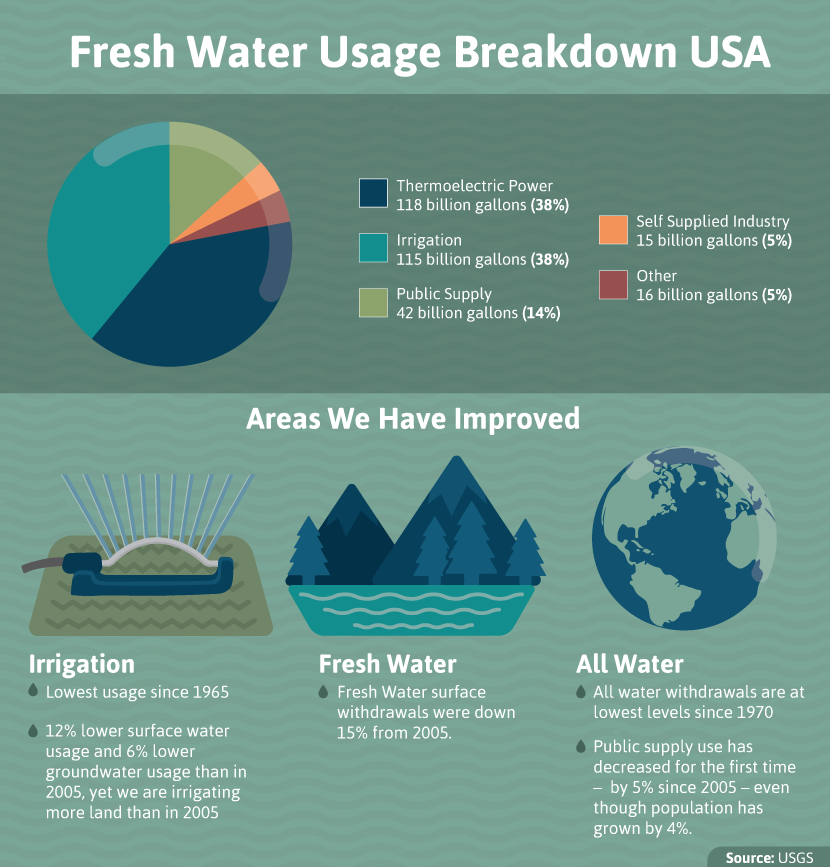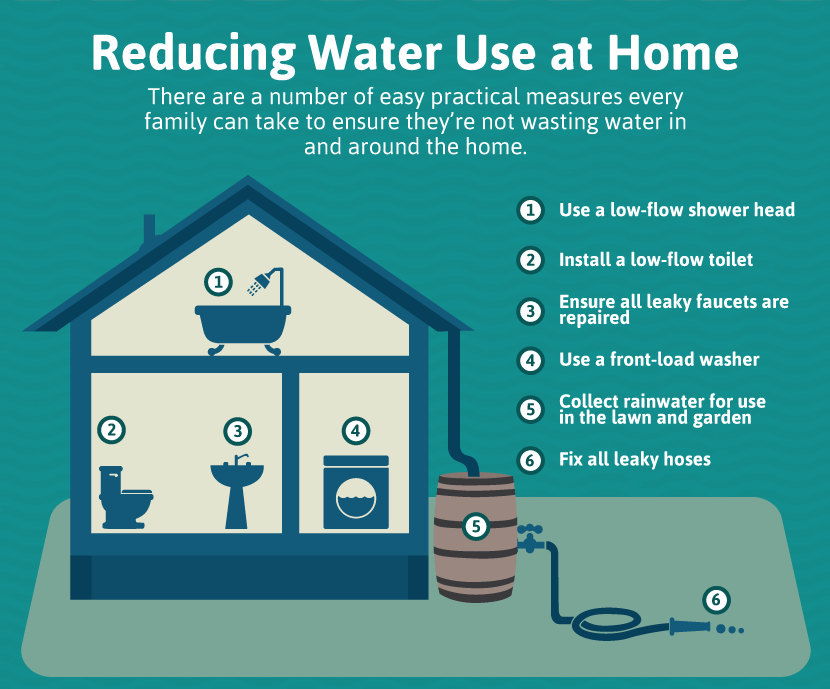Water 101
The What, Where, and How of Water
We’ve all heard the statistics: over half of the human body is water, you should drink eight cups of water per day, and you can survive only three days without water. These numbers definitely drive home the importance of water, but no human really needs to be told how important water is to human life – it’s instinctive. What’s not instinctive is knowing exactly where our precious water comes from and how much time, effort, and money it takes to make it drinkable. Let’s start with a look at water on Earth.

Everyone knows that drinking sea water can kill you – the body cannot deal with the salinity (salt content). Sea water salinity varies around the world, but a good estimate is about 35 parts per thousand, or about 35 grams of salt per liter of ocean water. Meanwhile, safe drinking water should have less than one part per thousand, or one gram of salt dissolved per liter of water. Since 96.5 percent of the Earth’s water is saline, the vast majority of water on this planet is not suitable for cooking, cleaning, and thirst-quenching. And it’s not distributed evenly, either – think the Great Lakes versus the Mohave Desert.
Which Drop to Drink?
Most of us are lucky to have our choice of water (tap, spring, distilled, well, filtered, bottled, and any combination thereof), but most of us are also confused by the choice. Why so much variety for such a simple thing? Well, wild water can contain not only bacteria and parasites but also minerals, nutrients, and chemicals. The types and amount of things in the source water depend on its history, so water from different sources will need different treatments before it’s safe enough to reach the supermarket shelf or your kitchen sink.
Straight From the Source
Most drinking water (tap or bottled) in North America is from rivers, lakes, or groundwater (unless you have a spring or well that you use directly). These sources often contain lots of minerals from the soil and rock that they’ve been exposed to over time. But they can also be high in pollutants, bacteria, parasites, and particles, depending on the location. Some bottled water companies boast glacial or spring sources, which have higher levels of minerals and lower levels of pollutants, but they still might undergo some processing. There is one last sneaky and surprising source of water for bottled water: tap water. So why go through all the trouble of finding, gathering, and treating water when most of the hard work is already done?

Treatment Time
Most of us know not to drink water directly from lakes or rivers. Water needs to be tested and treated before it gets to your lips to ensure that it’s safe to drink. On a commercial scale, most treatments fall into two general categories: physical and chemical. Physical treatments separate solids (including salt) from the water through settling or filtration, and chemical treatments remove dissolved substances from the water by flocculation or killing bacteria and viruses through disinfection. Other techniques, such as biologically active carbon and UV, are becoming more common because they reduce the amount of chemicals added to the system. Most facilities use a combination of these techniques to meet national quality standards in an efficient and cost-effective way.
Is Bottled Better?
When deciding what kind of water is best for you, there are health and environmental considerations. All types of water, save distilled, will have small amounts of minerals, chemicals, and bacteria. Distilled water is purified through distillation – where the impure water is boiled and the steam is collected and condensed in a clean container. Distilled water is often used in laboratories and places where very pure water is needed. While this nearly perfect H20 might sound enticing, it’s overkill for human consumption. The minerals we get from drinking water are actually good for us. So the best way to get the good without the bad is to drink spring and mineral water. Unfortunately, spring and mineral waters come with a high price in the supermarket and to the environment. First, it’s expensive to obtain and treat water and then package and distribute it in plastic bottles. Second, despite being recyclable, plastic bottles keep piling up in landfills and washing up on beaches. As with most things, the best option lies somewhere in between: choose tap water at home and spring and mineral water when you’re on the road or as a treat. If you don’t have a taste for the tap, there are many home treatment systems to choose from.
Reducing Use
Water gushes at us from all directions in North America: taps, showers, hoses, and even from the sky! The supply seems endless, but more and more, we hear of droughts and shortages in our own backyard and around the world. Water is everywhere, but clean water is not. Clean water requires a significant amount of work. So we need to remember that our bubble baths, swimming pools, toilets, and lush green lawns are luxuries, not necessities. The amount of water we drink is actually relatively insignificant, and we can’t (and shouldn’t) reduce it. But we can reduce the amount we use in and around our homes by thinking big and small. Below is the breakdown of fresh water usage in the United States, according to the USGS.

Thinking Big
Check your appliances and fixtures for leaks, and consider replacing them with low-flow or water-efficient versions. If you’re particularly keen, you might want to try out a gray water system so you’re not using drinking water for non-drinking water uses. In the yard, consider adding a rain barrel or two to your landscape and water your garden for free next year. Grassy green lawns may have been a point of pride in the past, but natural lawns with native grasses and flowers are beautiful, fruitful, and able to survive without constant watering. The birds, the bees, and your wallet will all be impressed.
Thinking Small
Big changes can make a big difference, but so can small changes. The first step is to start thinking before you throw water down the drain. Flushing toilets, taking showers, washing dishes, brushing teeth, and boiling water are all daily opportunities to reduce water use. Get creative. Use a timer on your showers to get better feel for how long you’re in there. Open taps slowly to wet and rinse your toothbrush. Use your pasta water for cooking the veggies that go with it. We all need to learn to use just enough instead of way, way, way too much.

Keeping it Safe
Water use reduction is one important step, but keeping the water supply healthy is another. Water is everywhere – as a gas in the air, as a liquid on and under the ground, and as a solid in glaciers and ice caps. It’s also constantly moving between those areas as rain falls, lakes evaporate, and glaciers melt. This means that keeping water safe is a global challenge. Air pollution, fertilizer use, and landscape destruction all negatively affect the water supply and the amount and cost of water treatment.
What can you do from home? Switching to eco-friendly cleaning and personal care products is the single best thing you can do to help keep the water supply safe. The Good Guide is a great place to start to find products that you can feel better about sending down the drain.
Embed the article on your site

